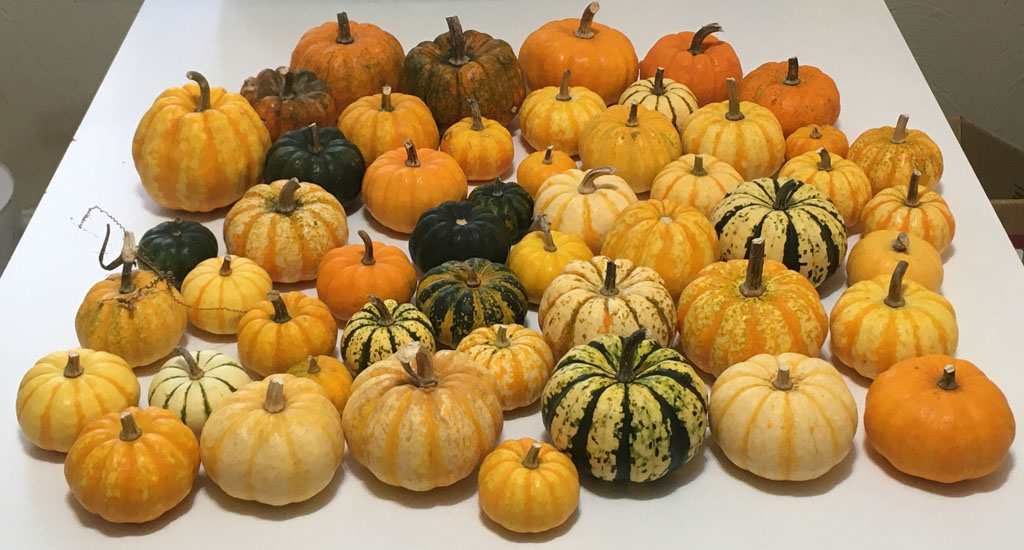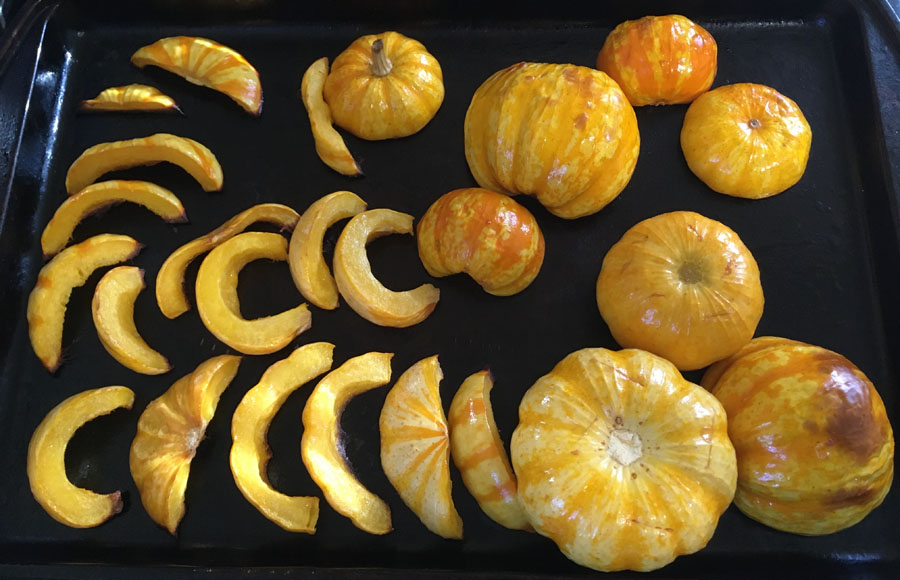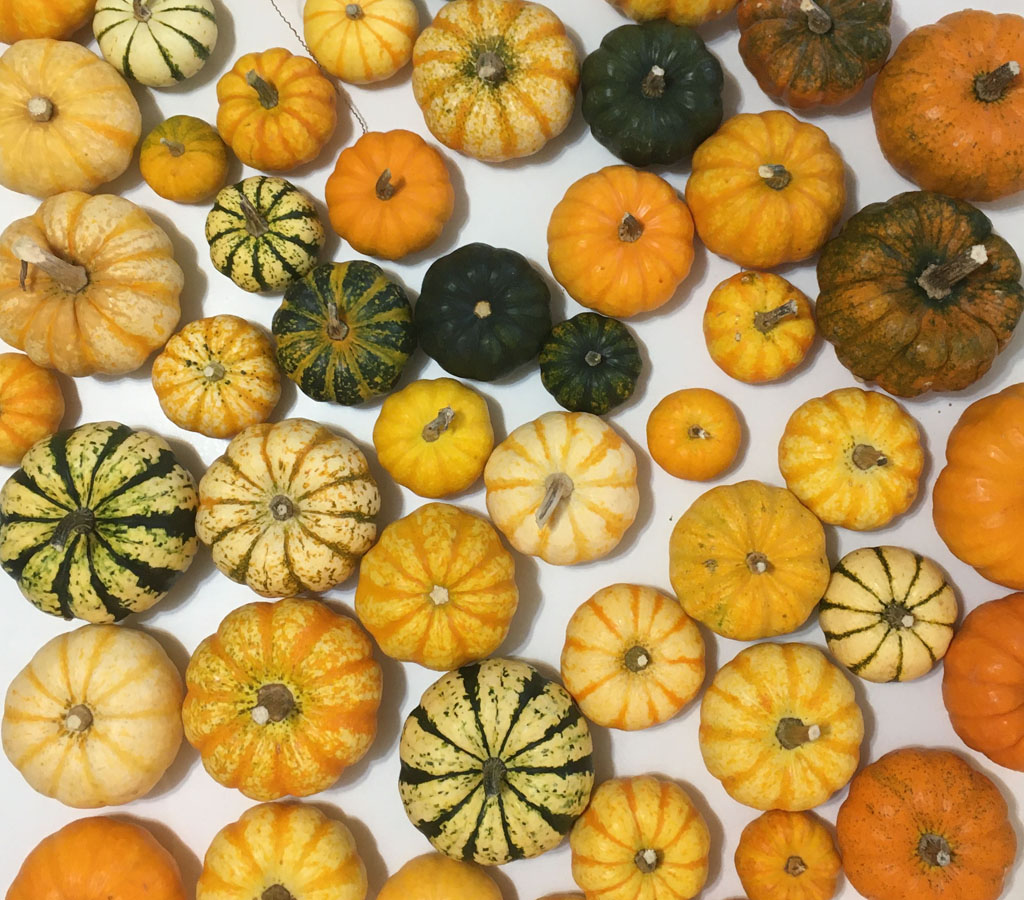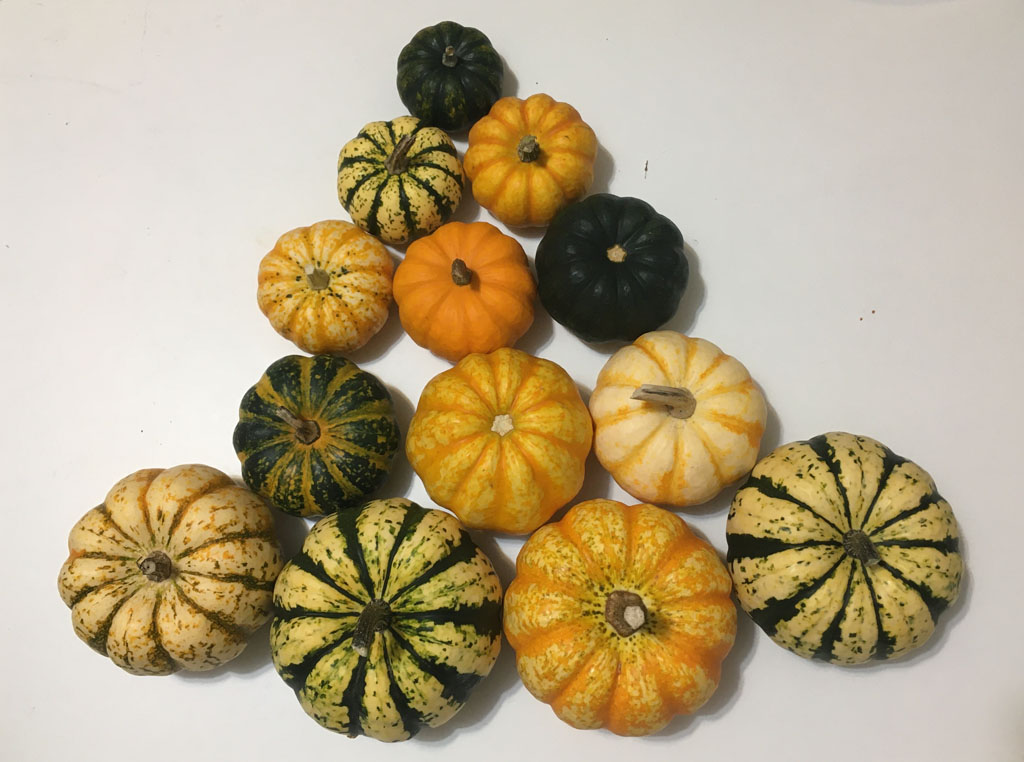I can only speculate as to what I was thinking when, halfway through a rushed, early-pandemic visit to the local hardware store, I purchased a packet of mini-pumpkin seeds.
At this tiny rural crossroads, where I went in hopes of finding smaller crowds, the wearing of masks had yet to become political and was only greeted with the organic hesitancy that we all still innocently shared. I walked in wearing my own improvised covering of furnace filter material, held in place by a bent length of Romex and two rubber bands. It was likely a combination of caution and mild embarrassment that caused me to keep my trip through the seed aisle as short as possible, and my selections sparse.
Guided by light
It was March 2020, and already it was clear that the carefree days of the previous year would not be seen again for some time. In thinking of how my garden should react to this new reality, the memory of a spontaneous vignette from the previous year must have played a part.
That previous summer in 2019, I was giving a friend a ride back from the airport, when she mentioned that she had been very surprised to encounter fried squash blossoms (which she had thought were not known in the US), at a dinner she had attended on the trip. As it happened, I had planted spaghetti squash that year, and at that moment my garden was full of squash blossoms. We detoured to my farmstead and stopped to pick some. Arriving at her home, I did not simply drop her off, but she duly breaded and fried them, and shared the delicious result with me.
Yet, it was not the act of seeing them prepared so deftly that day that impressed the memory upon me most strongly, but a simple silly gesture while still in the garden. After I had handed her several of the flaming, golden blooms, she held them high with her right arm, and asked, “Do I look like the statue of liberty?”
Too random to anticipate and much too fleeting to photograph, the scene that bore this spontaneous comment upon a backdrop of a dewy summer morning went on to drape itself in the gauzy, gathering mist of a receding summer memory. While not particularly memorable in the moment, by March of 2020, it increasingly seemed like such a scene might never happen again.
Thus, in the seed store, something in my amygdala must have felt that if I could have squash blossoms again, everything would be all right.
Among my hasty seed selections I included a packet of “Mini Harvest Blend” pumpkin seeds — pumpkins are squash, right? — and then proceeded to get out of there as fast as possible.

Goblin garden
This seed packet turned out to contain a mix of several mini-pumpkin varieties, all named with oddly mischievous names: Wee Be Little, Jack Be Little, Gooligan, Hooligan, and Ruffian. But I didn’t care, because I wanted nothing but their blossoms. In fact, the previous year, it was spaghetti squash that had furnished the memorable scene, and they had no descendants, having found no pollinators. So a blossom farm it would be.
But I had not anticipated that lockdown would prevent my friend’s frequent visits, and thus my ability to proudly share blossoms or even to have them cooked in her well-taught way. Soon, my blossoms found their rightful customer — the local bees. Despite not having found the previous year’s spaghetti squash, they definitely found the pumpkins, and by fall of 2020, the picture on the seed packet was validated.
Having no use for the handful of pumpkins that resulted (and disappointed that again there were no spaghetti squash), I curiously gathered a few and placed them on the unheated porch, where they spent the winter.
The new deal
By spring of 2021, the porch pumpkins had begun what would have been a spectacular performance of rapid decomposition had I not carefully removed them to the compost pile. By planting time, they had melted into the pile, and were long forgotten. As for planting, the bloom was definitely off the pumpkin — I was not going to plant them again.
Unfortunately, the pumpkins were still lurking in the compost, and had other ideas. By June, every corner of the garden was expressing its summer thought not in Thoreau’s “bean leaves and blossoms” but in a blanket of volunteer vines.
Despite my efforts at plucking them out, the fallen plants were backed up by legions of lightly buried seeds, eagerly awaiting their turn to sprout in the sunshine vacated by their predecessor. By the time I had lost interest in weeding the garden, the reinforcements were already sending their curly tendrils up into the sunflowers. I let them grow.

So all this summer, they grew unwanted, without intervention and with only tacit permission. Among them were even a few unexplained spaghetti squash, whose presence I cannot account for, given that none had fruited the previous year to leave any seeds. In fact, they may be a random hybrid that is neither spaghetti squash nor pumpkin.
Squash came to hang in festoons from sunflower stalks, their spiral tendrils grabbing whatever else they could for support, reaching aside and bringing down tomato and pepper plants, spreading across the paths in the garden and beyond. Field mice, the bane of my garden, would try to gnaw into some of the pumpkins that touched the ground, but left only frustrated bite marks in the impervious rind. Finally, the mother vines began to die away, and the stems dried to the point they could be snapped off the vine. I grudgingly gathered almost two hundred of them, hoping to get them out of the garden to prevent a repeat performance next year.
Thinking to dispose of them or give them away, I was short on ideas. I considered composting them, but it was too late in the season; the compost would never get hot enough to kill the seeds. I gave some to my friend to give to her students as a Halloween gift. I cut some open to roast the seeds, but found that the seeds were a bit too small to eat. I even flirted with the idea of parking outside of a pub downtown, with my tailgate open, and giving them away to groups of drunk people. Unable to muster the courage for that, I began to consider an even more subversive solution: eating them.
Can you eat it?
It’s said that when mixed varieties of squash are left to grow among one another, their openly pollinated seeds can lead to some odd hybrids, and that if you want your squash to be what you expect, you should only plant new seeds rather than those that you save. It even seems that it’s possible that a random hybrid might be inedible. Since these were volunteer pumpkins, conceived in the presence of some very frustrated spaghetti squash, I approached their edibility with care.
In an abundance of caution, I baked one — and it was tasty: sweet, and a little nutty.
Encouraged, I baked some more, separated their flesh and pureed it, and added it all to a pot of pea soup. It was excellent.
These unwanted pumpkins have now redeemed themselves, and have gone from being poised for disposal to occupying a berth in the cool winter cellar.
How to cook mini-pumpkins
First, remove the stem and use a large, sharp knife to very carefully cut it down the middle, parallel to the stem.

Then scoop out the seeds and stringy material with a spoon.

I tried various ways of cutting them, either parallel or perpendicular to the stem. It didn’t seem to matter.

I also experimented with cutting them into slices, either parallel or perpendicular to the ribs.

Whatever you do, brush them with some olive oil, arrange them on a baking pan, and bake at 400 degrees Fahrenheit for about 30 minutes.
As seen below, I also placed a couple of whole pumpkins on the sheet, having pierced them with a few holes using a knife, to let steam escape.

This is how they looked when they came out of the oven. Predictably, the slices were more cooked than the whole ones, with the others somewhere in between. But they were all sufficiently done.

They caramelized very nicely where they were touching the pan. This is a result of using a pan with a very dark surface. I have found that shiny or untarnished pans do not brown as well.

Now, the most time consuming step begins.
It took about 15 minutes to separate the soft inner flesh from the harder outer shell, which has now become soft from the baking but will not become edible no matter how long you cook it. It has to be separated from the flesh and discarded.
To process the slices, I used a small knife to basically cut away or peel the shell from the flesh. It was kind of messy, and required patience.
For the halves, I was able to use a spoon to scoop the flesh out, quite efficiently.
For the uncut fruits, I had to cut them in half first, and remove the cooked seeds and stringy material. They mingled with some of the flesh and made it hard to know if I was removing stringy stuff or flesh.
Among all these ways of preparing them to bake, I recommend simply cutting them in half, scooping out the seeds, coating them with oil and then baking them cut-side down.

The result was about 12 ounces of pumpkin flesh, which has a distinctly pleasant, sweet and nutty flavor — the perfect ingredient to give substance and depth to a thick and creamy soup.
How to use mini-pumpkins
To prove the point, here is my recipe for a tasty meat-free pea soup, or pease porridge, featuring baked mini-pumpkin.
Pea soup with roasted mini-pumpkin
6 pints water
8 ounces green split peas, 4 ounces split red lentils, and 2 ounces pearl barley
One rib of celery, two medium carrots, 2 medium onions, a few cloves of garlic
12 ounces roasted mini-pumpkin flesh (you need about 2.5 to 3 pounds raw pumpkins)
12 ounces potatoes
Salt and pepper
1 tablespoon olive oil
Preparation time: seems like forever but it’s worth it.
Break off stems from pumpkins, cut in half, remove seeds, and brush with olive oil. Slice the onions and mix with some oil to cover their surface. Place onions and pumpkins on an oiled shallow baking sheet, pumpkins cut side down. Roast in 400F oven. After about 10 minutes, check on the onions. They should be caramelizing, but don’t let them dry out too much – stir them as needed, and take them out when they’re done, after perhaps 20 to 25 minutes. After a total of 35 to 40 minutes, the pumpkins will also be done. Remove, and when cooled, use a spoon to scoop out as much flesh from the pumpkins as you can, leaving the outer shell behind. Depending on how well done the pumpkin is, this could be time consuming and require care.
Put peas and barley (but not the split red lentils) in a large pot with the water and bring to a boil. Turn down the heat and allow to simmer gently with the lid on for 1 hour and 10 minutes, stirring occasionally.
Add the split red lentils, stir, and simmer for another 15 minutes.
Dice the vegetables to a size of your liking (for this soup, smaller is better) and add them to the soup, along with the caramelized onions and roasted pumpkin, which you should also chop up as fine as possible, or puree if you feel like it. Bring it back to a slow boil, then back down to simmer for another 20 minutes, stirring occasionally. Add pepper and salt to taste.
The bottom line: mini-pumpkins are not only edible, but very pleasing as such. Their duties should not terminate after October 31, but can be extended very profitably into the winter kitchen.

Article and photos Copyright 2021 by the author.


